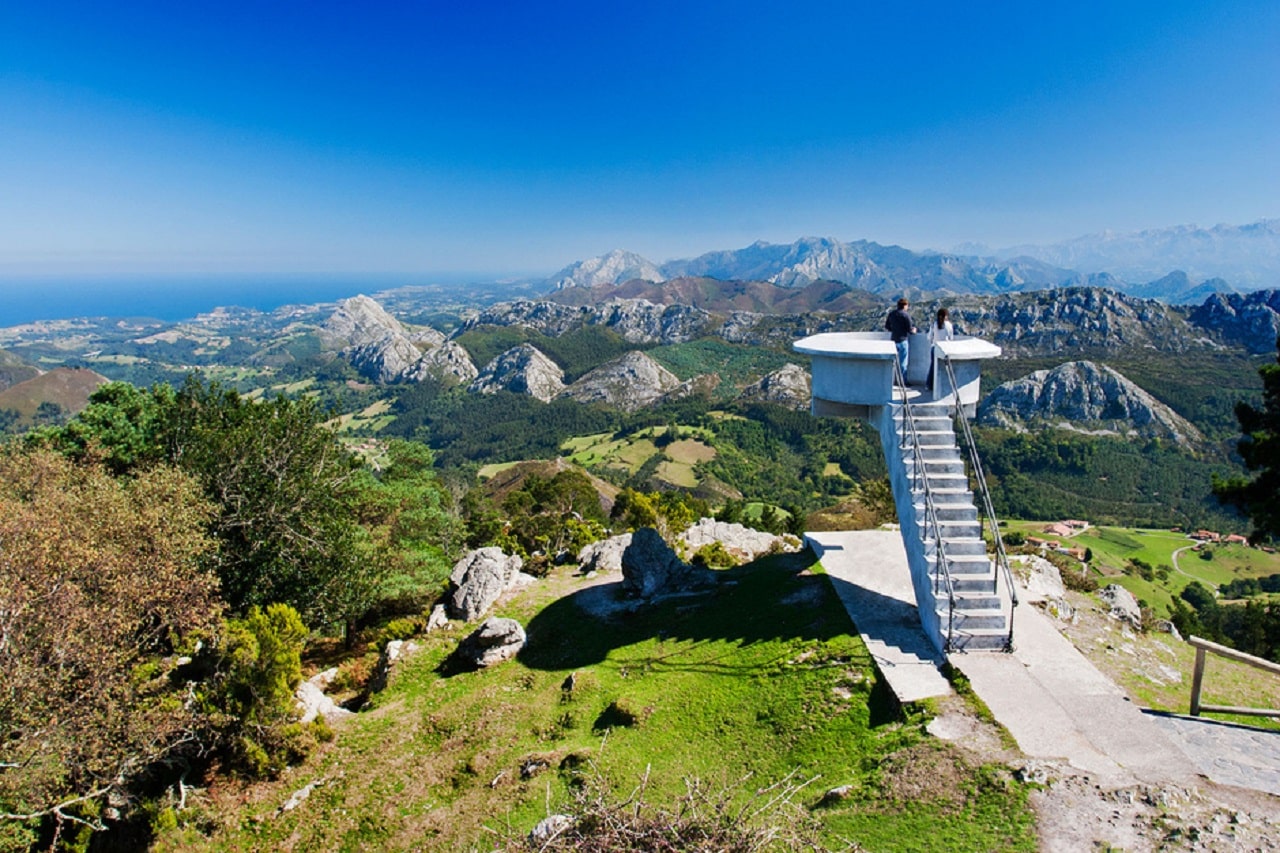
The viewpoints of Asturias They allow you to observe wonderful landscapes of one of the most beautiful regions of Spain. Few like her combine sea and mountain just a few miles apart. Green and fertile lands next to a sea as rough as the Cantabrian make up its coastal plain.
And very close are the colossi that make up the Picos de Europa and the rest of the Cantabrian mountain range. Both in some areas and in others you have magnificent natural balconies that allow you to observe these wonders from a privileged position. You can also reach many of them by making precious hiking trails. So that you can enjoy all this, we are going to show you some of the best viewpoints in Asturias.
Fito or Fitu viewpoint
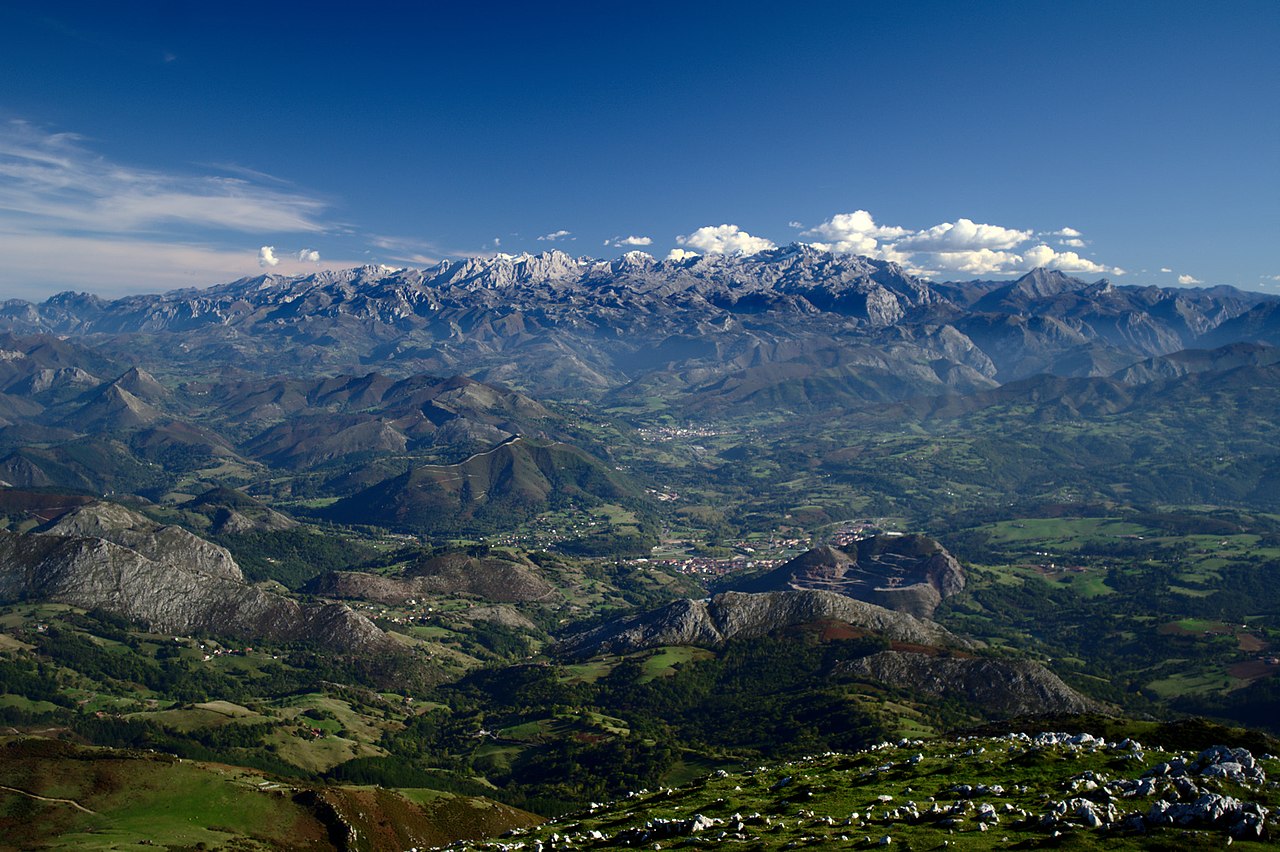
View of the Picos de Europa from the Fito viewpoint
In the council of Parres is the Sierra del Sueve, whose maximum elevation is Pienzo or Pienzu peak in asturian Precisely in its foothills, you have the Fito or Fitu viewpoint, also in the native language. It is one of the most popular in the region and offers spectacular views of the Picos de Europa. But, on clear days, you can see as far as the sea. As we were saying, the proximity between this and the mountains in Asturias is surprising.
You can get to the Fito viewpoint with the utmost ease, since you have a road to it. you can take it in Arriondas and is the N-260. Precisely, since you are in the area, we advise you to visit this beautiful town, from which the famous International descent of the Sella every year.
Precisely where this river meets the Piloña you have the Concordia park, where there is a spectacular statue created by Joaquin Rubio Camin. Already in Argüelles street, you have the St. Martin's Parish Church, Romanesque style. And, close to it, two perfect examples of Indian architecture. In case you do not know, this name is given to the construction style used for its mansions by emigrants who returned from America to their land enriched. These examples that we are talking about are the Villa of the Valley y Villa Juanita.
Mirador de la Reina
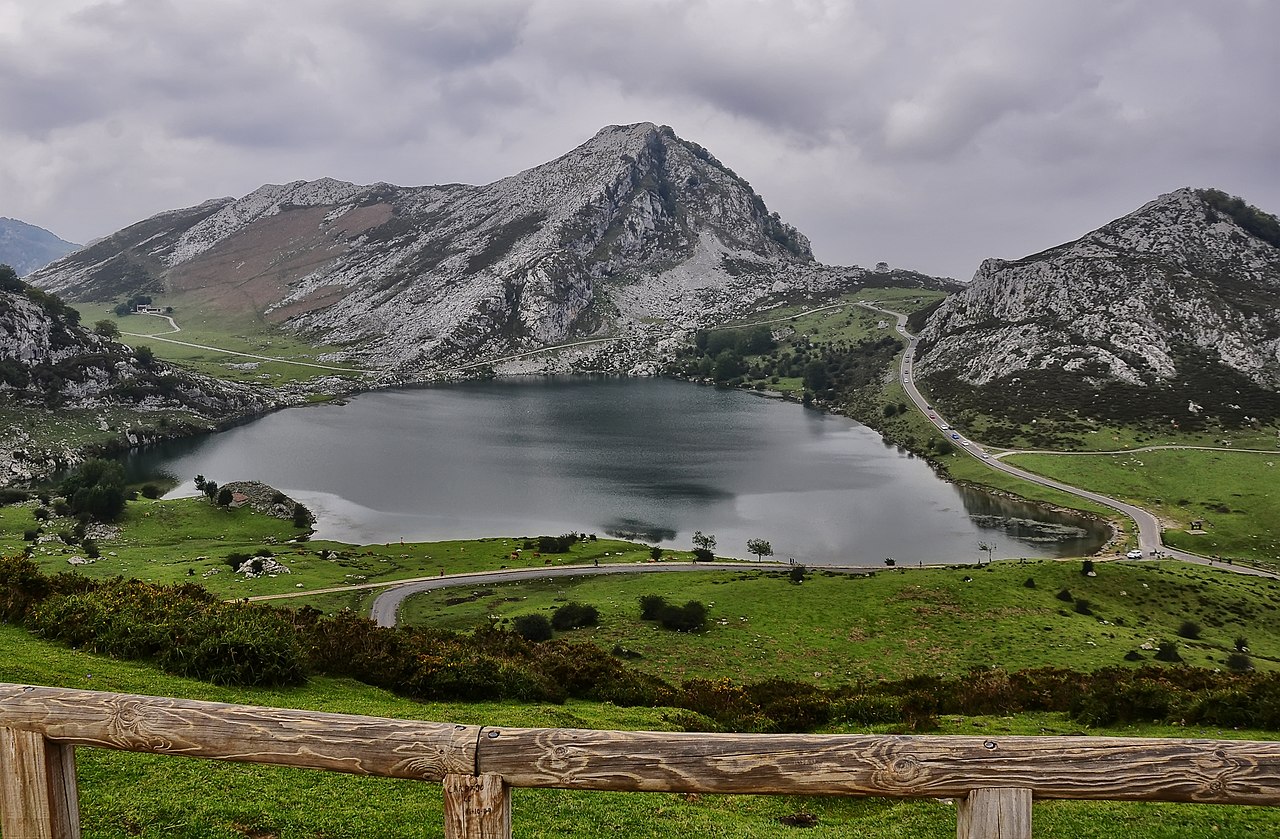
View of Lake Enol from the Picota viewpoint
One of the largest concentrations of viewpoints in Asturias is in the surroundings of the mythical mountain of Covadonga, more specifically in the part of the lakes. On the road that goes up to these you will find the queen's lookout. It offers you a wide circular panoramic view of the Picos de Europa, but also of the councils of Onís and Cangas de Onis (they are not the same), as well as those of Parres, Ribadesella y Llanes.
Also in the area of lakes of Covadonga Do you have the Picota viewpoint, which is precisely between the Enol and the Ercina. From this, you have spectacular views of both lakes, the western massif of the Picos de Europa and the Comeya plain.
In turn, the prince lookout It is very close to the Buferrera car park. And it gives you spectacular views of the aforementioned Comeya plain, the Güeña river valley and the no less spectacular Sierra del Sueve.
On the other hand, since you are in the environment of Covadonga, be sure to visit the Santa Cave, a place full of mysticism for both believers and those who do not profess the Catholic faith. And, next to her, the precious basilica, a marvel of neo-Romanesque style built in pink stone and due to the architect Federico Aparici and Soriano.
Finally, do not forget to visit the nearby city of Cangas de Onis, which was the first capital of the Kingdom of Asturias. In this one, you have the famous Roman bridge, which however was built in times of Alfonso XI (1311-1350). But also the church of the holy cross, dating from the XNUMXth century; the Cortes Palace, of the XVIII; the Town Hall and mansions such as Villa Monasterio or Villa María.
San Roque, one of the most beautiful viewpoints in Asturias
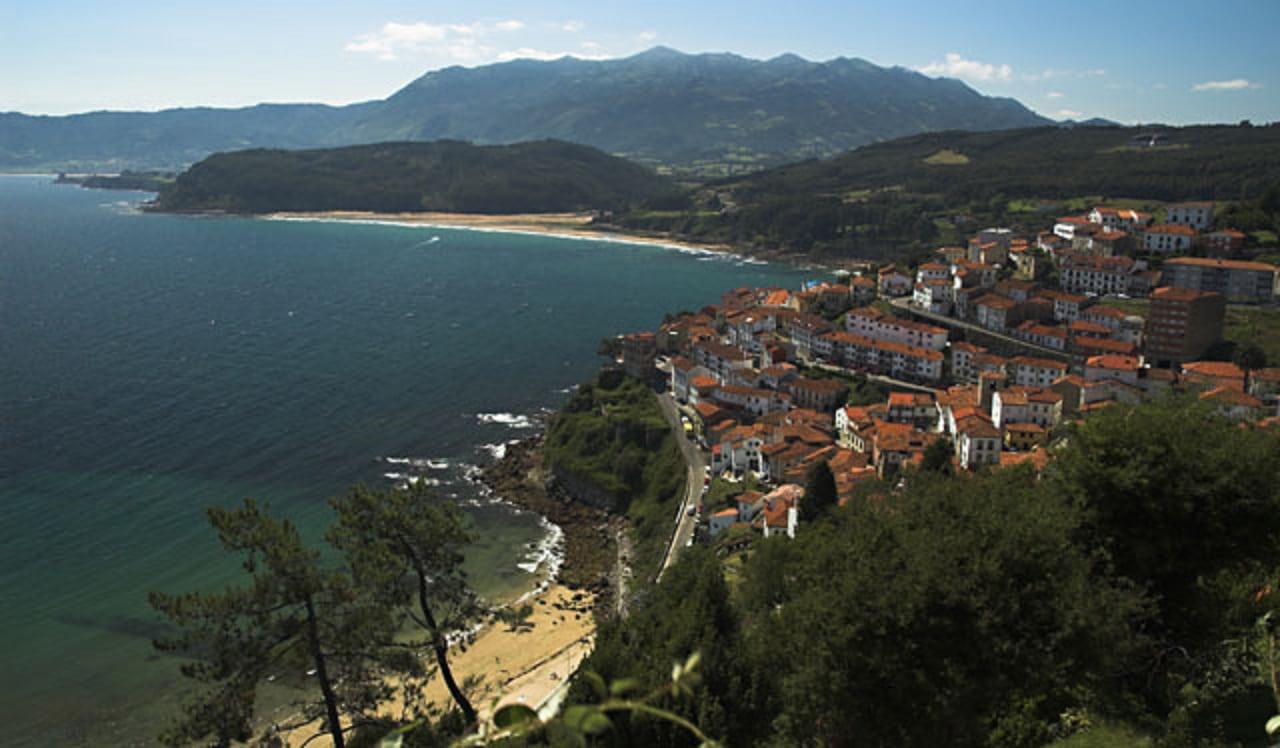
Lastres seen from the San Roque viewpoint
We are not leaving the eastern part of the Asturian region, but we are going to the coast to talk to you about viewpoint of San Roque, which is located next to the village of Lastres or in what can be considered the highest part of it. From it, you have impressive views of this beautiful town and the entire coastline, but also of the aforementioned Sierra del Sueve.
In addition, next to the viewpoint you have the Chapel of San Roque, who has been venerated in Lastres since the XNUMXth century. However, the temple is more modern, specifically from the XNUMXth century. It is a small building with a nave, gabled roof and columned porch. Also, very close you have two other chapels, the one of the good event and of San Jose.
Finally, do not forget to visit the beautiful town of Lastres, which rose to fame when the television series was shot there doctor matthew. It has a beautiful historic center of traditional houses with wooden galleries. But its two most important monuments are the Church of Santa Maria de Sadaba, from the XNUMXth century, which combines the baroque and neoclassical styles, and the Clock Tower, of the XV. Already on the outskirts of the town you have the imposing palace of lights, a manor house from the XNUMXth century that is currently a hotel.
Cape Peñas viewpoint
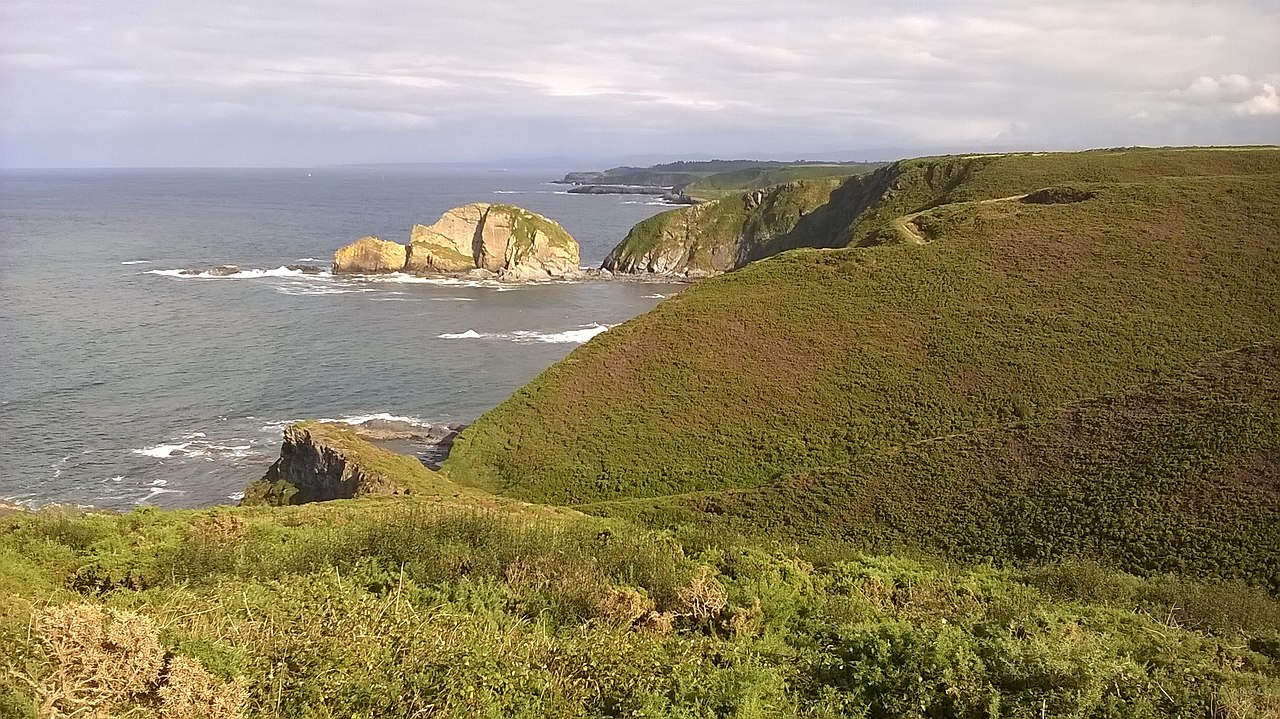
The Cantabrian coast from the viewpoint of Cape Peñas
We approach the center of Asturias, specifically to council of gozon, to tell you about another coastal viewpoint. In this case, it is the one located in the middle Cape of Peñas, which offers you impressive views of the rugged Cantabrian coast. With clear skies, you will see perfectly the coastline of Avilés, aside, and Gijón, the other.
Also, next to it you have the Cape Peñas Lighthouse, built in 1852, which is the most important of all Asturians. As a curiosity, we will tell you that his flashlight, with a range of forty-one miles in good weather, was bought at the Universal Exposition of Barcelona from 1929. In its lower part it houses the Peñas Marine Environment Interpretation and Visitor Reception Center.
On the other hand, if you visit this viewpoint, we advise you to go to the beautiful town of Luanco, capital of the council where it is located. It also has a beautiful historic center in which the church of Santa Maria, listed as a Historic Artistic Monument. It was built in the XNUMXth century and its exterior sobriety contrasts with the baroque magnificence of its interior.
Likewise, you should see in Luanco the Clock Tower, also from the XNUMXth century, and the houses of Mori and Valdés PolaAs well as Institute of the Holy Christ of Help. But above all, the Mendez de la Pola Palace, also a Historic-Artistic Monument and built between the XNUMXth and XNUMXth centuries. It is not open to the public, but it stands out from the outside for its two large towers, its lintelled door and its coats of arms. Finally, the manzaneda palace it dates from the XVII, although it was extensively restored in the XX.
Mount Naranco viewpoint
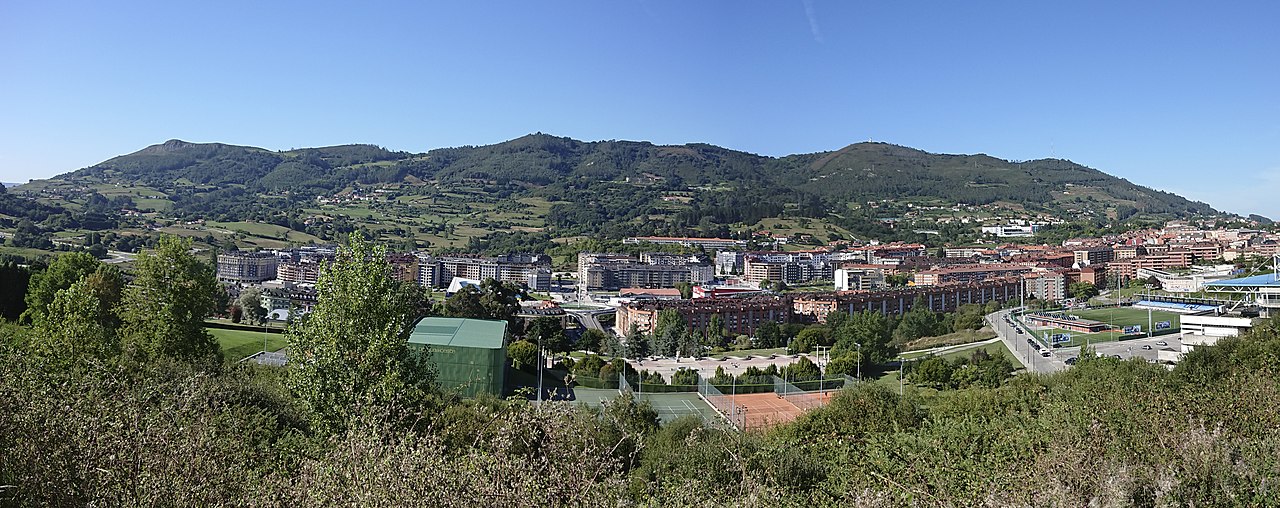
Oviedo from the viewpoint of Mount Naranco
We end our tour of the viewpoints of Asturias in this one located above the city of Oviedo. Precisely, it offers you spectacular views of the capital of the Principality of Asturias, but also from the entire central area of the province. Even on clear days, you can see the first foothills of the Cantabrian Mountains towards the León. Not in vain, it is more than six hundred meters high.
In addition, on Mount Naranco you have a wonderful natural lung that offers you more than thirty thousand square meters to do outdoor activities. You even have a Finnish track. And, after exercise, you will also find numerous bars and picnic areas where you can recharge your batteries.
On the other hand, in Naranco you have to see the imposing Sacred Heart statue that looks at Oviedo from the top. It is thirty meters high and was built in 1980. But, above all, on this legendary mountain you have two of the most important buildings of pre-Romanesque art: Santa María del Naranco and San Miguel de Lillo, both declared Heritage.
El Palace of Santa Maria del Naranco It was part of the residential complex of the king Ramiro I and was completed around the year 842. Originally it was the Aula Regia of the court rooms, that is, the throne room and reception room. But in the twelfth century it was transformed into a church. It has a rectangular floor plan and two floors with an external staircase that goes up to the highest. For its part, the ground floor has a barrel vault and other similarities with the Holy Chamber of Oviedo.
For its part, the Church of San Miguel de Lillo was part of the palatine complex of the aforementioned Ramiro I. Currently, only a third of it remains. But, originally, it had a basilica plan and three naves. The part that you can see today corresponds to the hall and the beginning of those naves. Its roof is vaulted, with a complex system of barrel vaults. Likewise, its sculptural decoration in relief stands out, especially that of the door jambs and that of the capitals inside.
In conclusion, we have recommended some of the best viewpoints of Asturias. But we could recommend others that offer equally spectacular views. Between these, the one with Cape Vidio, near the beautiful village of Cudillero; the Ordiales viewpoint, also close to Covadonga, as well as the Muniellos viewpoint, the latter in the wonderful comprehensive nature reserve of the same name. Go ahead and visit them and tell us what you think.